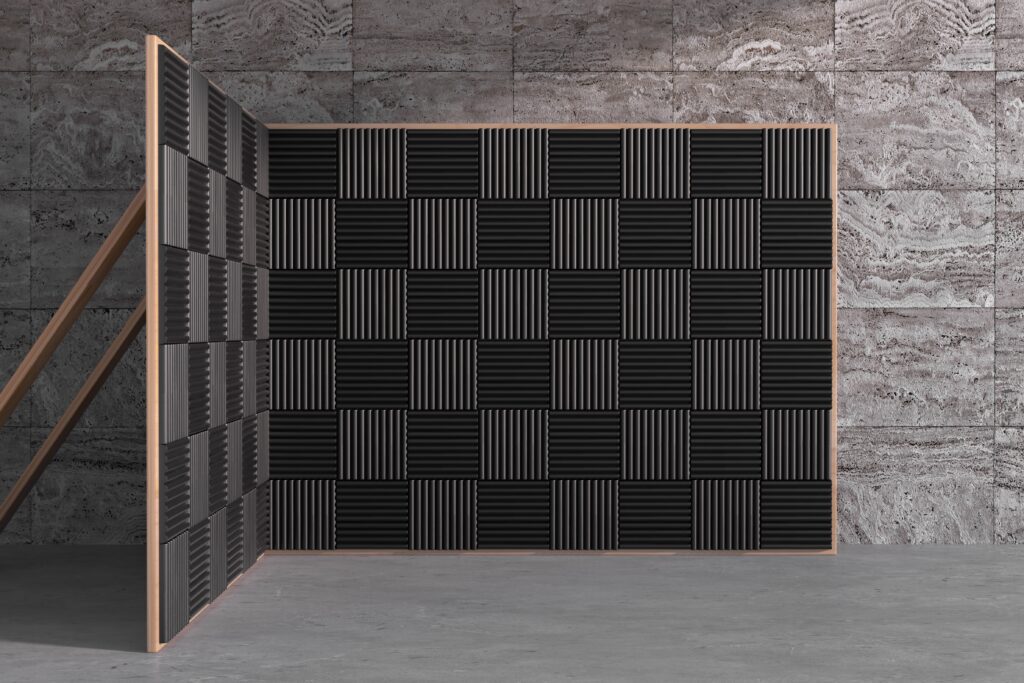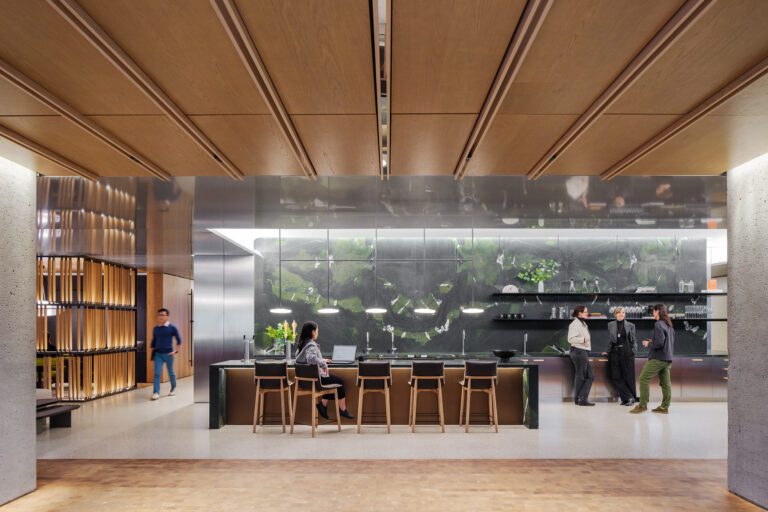Walls are typically the main focus of soundproofing projects, but ceilings matter too!
The ceiling is a key consideration for any soundproofed space, but it’s especially important for large work areas such as auditoriums or concert halls. In these spaces, ceilings play a critical role in keeping sound from entering or escaping while improving the quality of the sound that’s contained.
For soundproofing that provides acoustic benefits and aesthetic value, install a wood panel system that beautifies your space’s walls and ceilings.
In the sections below, we’ll review the role of ceilings in soundproofing. We’ll discuss soundproofing principles as well as practical, environmental, and budgetary considerations.
The Role of Ceilings in Controlling Sound Transmission
When sound waves travel indoors, they bounce off ceilings, walls, and other surfaces and spread throughout the space.
Factors that impact the movement of indoor sound waves include:
- The abundance of surfaces compared to the amount of open space
- The shape of the surfaces that the sound waves hit (e.g. flat or curved)
- The material that the surfaces are made of
Some materials, like metal, are highly reflective. Metal surfaces absorb very little sound; instead, sound is both transmitted and reflected. For soundproofing purposes, metal surfaces would allow indoor sound to escape, allow outside sound to enter, and create a noisy indoor environment.
On the other end of the sound reflection/absorption spectrum, there’s wood. Wood – when in the proper format – can absorb sound, reducing the amount of noise that passes through or is reflected. In this way, some wood products create soft, warm tones in a room, while also soundproofing the space.
In large rooms, such as auditoriums, sound waves travel greater distances before reaching the ceiling. In such spaces, it’s essential to use materials that effectively absorb sound in order to prevent an acoustic environment that’s full of excessive echo and reverberation.
Principles of Soundproofing Using Wood Panels
Soundproofing a space refers to blocking the entry of outdoor sounds and blocking the exit of indoor sounds. In many applications, soundproofing goes hand-in-hand with acoustic design, i.e. efforts to create a more pleasant and functional indoor sound environment.
Here are a few principles and design considerations for improving an acoustic environment with wood panels.
Mass and Density
The more soundproofing material added to a ceiling, the greater the soundproofing and absorption potential. A thicker barrier is more effective at blocking sound waves. However, wood ceiling panels don’t necessarily need to be particularly bulky.
Wood is both dense and porous, which helps with sound absorption. Wood can also be manipulated into shapes, such as curves, or modified to accomodate sound attenuating material in their construction, which further assist with soundproofing and acoustic control.
Sound Damping and Absorption
Sound absorption occurs when a material diminishes the strength of sound waves. The sound that’s reflected is weaker and softer. Similarly, sound damping refers to taking measures that reduce the vibration of sound waves that strike a surface. Damping and sound absorption reduce echo and reverb, creating a more pleasing acoustic environment.
Decoupling
Decoupling refers to separating structural components of a wall or ceiling. This creates outer and inner surfaces that aren’t in contact. The space between the decoupled parts serves to diffuse sound waves, contributing to soundproofing and acoustic control.
The Integration of Walls and Ceilings
A wood panel design can blend together walls and ceilings to form a beautiful arrangement that optimizes acoustic control. Curves and angles in the ceiling can be used to guide visual interest across the space while simultaneously optimizing the room’s acoustics.
Practical Considerations for Wood Ceilings
As you plan a wood panel ceiling installation, consider the pros and cons of various wood species. Woods come in a range of prices and present varying colors, grain patterns, and performance characteristics. Some of the finest woods for acoustics, aesthetics, and durability include ash, cherry, maple, and beech.
Along with wood selection, there are numerous panel designs to choose from, such as acoustical panels, linear, and grilles. Wood panel systems are also highly customizable. Check out Rulon International’s product page and project gallery to begin forming your design ideas.
While different woods and designs have varying pros and cons, wood panel systems are generally among the most durable and low-maintenance options for soundproofing and beautifying a large indoor space.
Environmental and Cost Considerations
To complete a beautiful design project without compromising on sustainability, work with a manufacturer that prioritizes the use of sustainable wood. Sustainable woods are harvested from responsibly-managed forests. Third-party certifiers like the Forest Stewardship Council (FSC) indicate the use of sustainable wood.
Compared to other materials that are used for ceiling soundproofing, wood panels offer the best mix of affordability, functionality, and beauty. Alternative materials can compete with wood on price and acoustics, but can’t offer the aesthetic benefits of a gorgeous wood panel design.
Get Sustainable Acoustic Wood Ceiling and Wall Panels for Your Space
Is your indoor space in need of soundproofing that not only enhances acoustic control but adds to the existing architectural beauty? Rulon International can help bring your boldest design vision to life. Contact our team today to discuss wood panel system ideas for your project.




